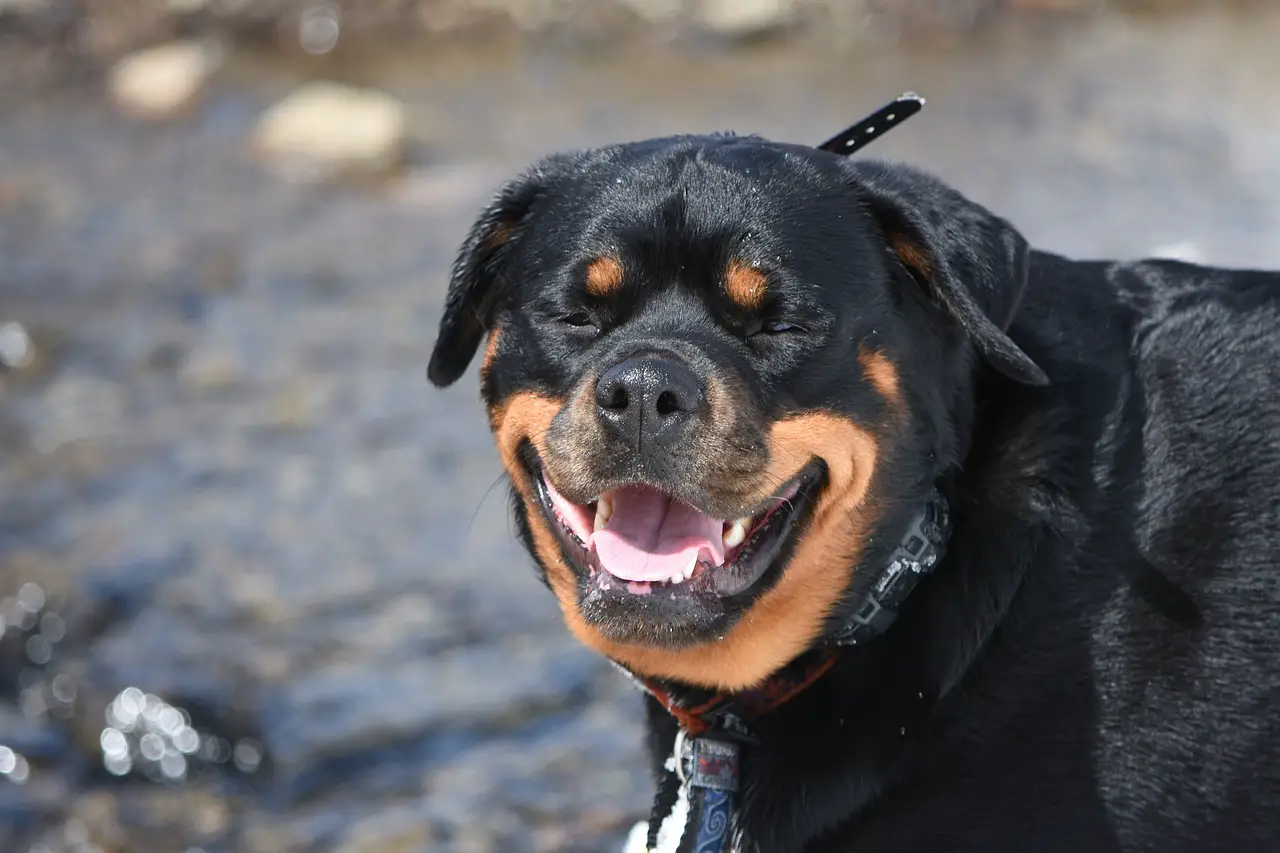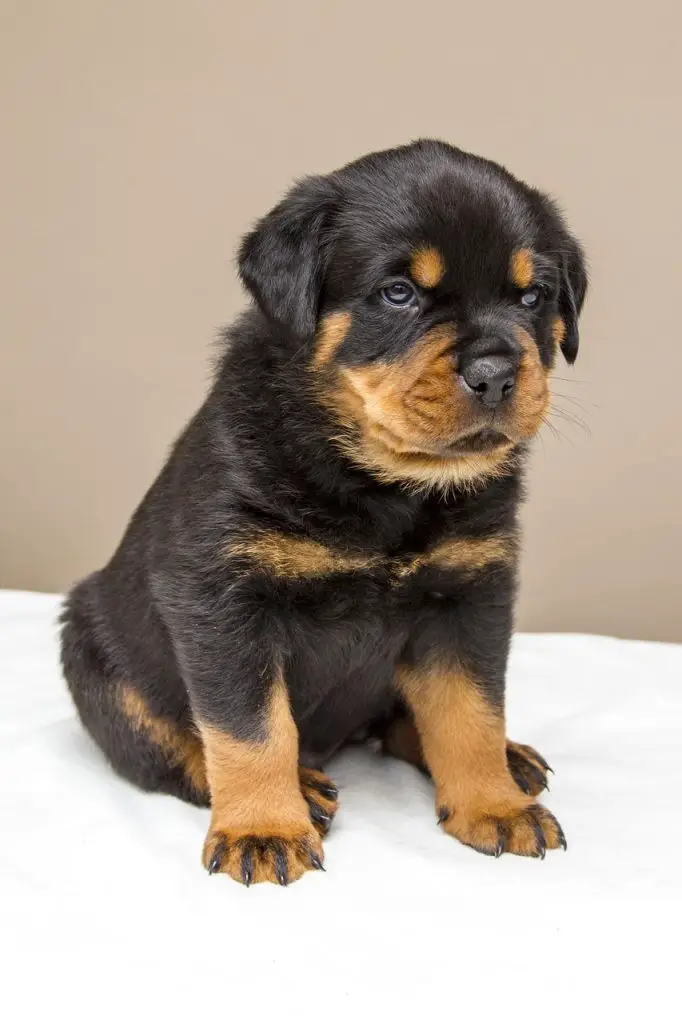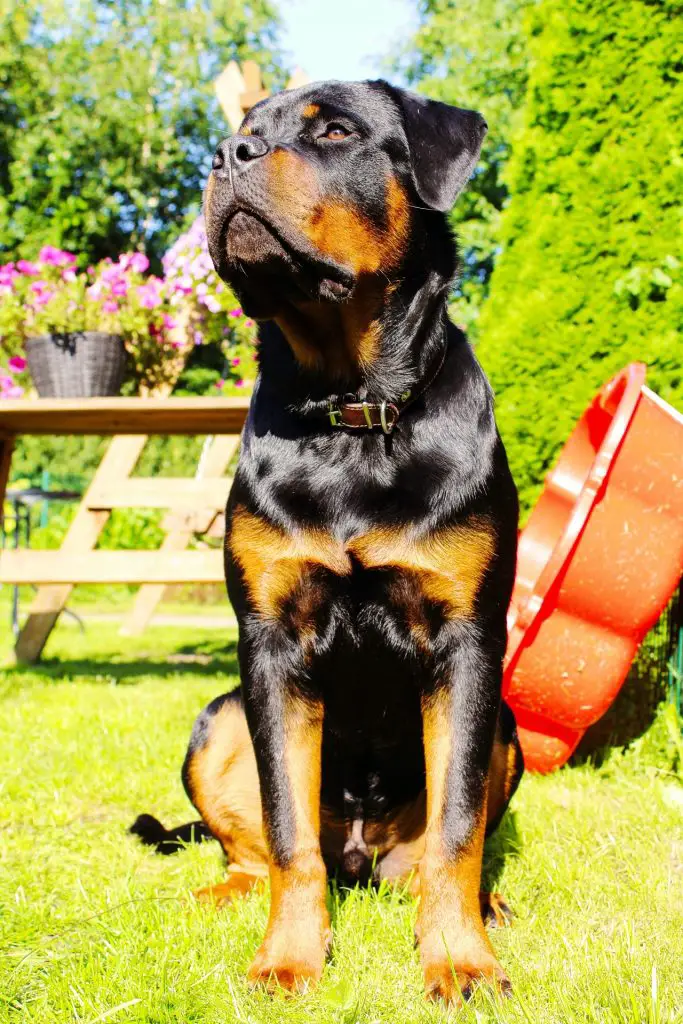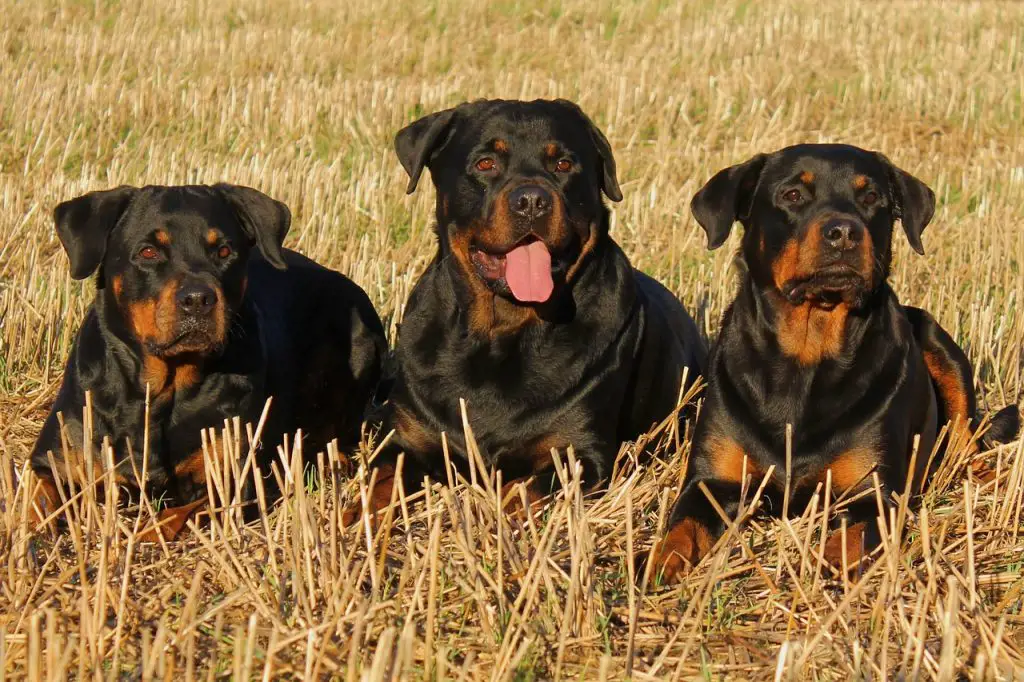Rottweiler Lifespan & Tips For Longevity

key Takeaways:
- Rottweiler lifespan can vary depending on various factors such as genetics, diet, exercise, and healthcare. These factors can greatly impact how long a Rottweiler lives.
- Diet plays a crucial role in determining the lifespan of a Rottweiler. Providing a balanced and nutritious diet can help ensure their overall health and longevity.
- The level of exercise a Rottweiler receives also affects their lifespan. Regular physical activity helps maintain their physical and mental well-being, contributing to a longer lifespan.
- Proper healthcare, including regular check-ups and vaccinations, is essential for maximizing a Rottweiler’s lifespan.
How Long Do Rottweilers Live?
Rottweilers can live for up to 10 years. The average lifespan for a Rottweiler is 8-10 years, however some do go on to live longer.
When it comes to the longevity of Rottweilers, there are various factors that can influence their lifespan. Understanding these factors can help provide valuable insights into how to ensure the well-being and health span these beloved dogs. By examining elements such as genetics, health and veterinary care, exercise, and nutrition, we will shed light on the important considerations in promoting a long and healthy life for these remarkable canines.
The Average Rottweiler Life Cycle
From the energetic and playful puppyhood to the wise and seasoned senior years, each phase brings unique experiences.
Let’s dive into the various stages of the Rottweiler lifespan and uncover the characteristics and milestones associated with each.
Puppyhood
During the period of puppyhood, which typically lasts from 0 to 1 year, perhaps up to 18 months, Rottweilers go through a phase of rapid growth and development. It is essential to provide them with the right nutrition, socialization, and training to ensure their healthy development.
As Rottweiler puppies transition into new homes, they may experience separation anxiety from their mother. It is important to provide them with the necessary care and attention during this time of vulnerability. They will require a loving, safe environment to grow and thrive in.
This means emotional support and bonding as well as allowing the puppy to be a puppy, meaning explorative play is essential.

This is a great time to indulge in splurging on puppy supplies. Think comfortable bedding, chews, treats, you name it!
Socialization and exercise then play a vital role in preventing shyness or fearfulness and promoting physical and mental development.
Consistent training and steady discipline are necessary during this stage to address challenges such as testing boundaries and challenging authority. It’s also important to emphasize positive reinforcement training to strengthen the bond between the owner and dog.
To support the growth and well-being of Rottweiler puppies, it is recommended to provide them with a balanced diet that meets their nutritional needs. Regular check-ups with a veterinarian for vaccinations and overall health monitoring are essential.
As a Rottweiler puppy grows, they experience rapid and significant physical changes, such as an increase in size and weight. Their muscles and bones develop rapidly, allowing them to become strong and agile.
Alongside physical changes, their cognitive abilities also develop at a fast pace. To ensure healthy growth during this stage, regular exercise is essential. Engaging in age-appropriate physical activities helps puppies strengthen their muscles, improve coordination, and expend excess energy.
Adolescence
During the period of adolescence (1-3 years), Rottweilers experience significant changes and challenges. Be warned, this stage is characterized by testing boundaries, increased independence, and stubbornness. This may be a time when those more “protective” qualities start to show.
Consistent training and discipline play a crucial role in shaping their behavior. Continued socialization ensures that they are comfortable in different environments with other people and animals.
In addition to behavioral changes, physical growth continues during adolescence. Rottweilers reach their physical and mental maturity during this stage. Their bodies start to fill out and their personality is shaped. And although their hyperactiveness declines in this phase, regular exercise is still recommended to help burn off that energy.
Age-appropriate diets cater to their specific nutritional needs as they continue to grow. This may be a time when you can start to experiment with different types of food. Try supplementing their food with muscle flesh, organs and marrow bones to see how they take to them.
Adulthood
Adulthood is a stage encompassing the ages of 3 to 8 years for Rottweilers. This marks their physical and mental maturity. During this time, Rottweilers reach their peak strength and healthiness.
A unique aspect of Rottweiler adulthood lies in the importance of maintaining both physical fitness and mental stimulation. Engaging in activities that challenge them mentally can prevent boredom and destructive behavior.

Pro Tip: Incorporate puzzle toys or interactive games into your adult Rottweiler’s routine to provide mental stimulation while also keeping them physically active. This can help prevent behavioral issues caused by boredom or pent-up energy.
Like a fine wine, Rottweilers reach their peak in physical and mental maturity, proving that age brings out the best in this majestic breed.
Proper nutrition and veterinary care are also important during this phase to ensure their overall health and longevity. Regular check-ups and age-appropriate diet are necessary to support their physical and mental well-being.
Senior Years
Senior Rottweilers may have a few age-related issues, but they still know how to rock the doggy golden years like a boss.
In the later stages of a Rottweiler’s life, known as the senior years (8+ years), they may experience age-related health issues such as a decline in physical and mental function. This can include arthritis, reduced mobility, cognitive decline, and vision or hearing problems. Owners should be observant to changes in behavior or signs of discomfort and seek appropriate veterinary care to ensure the best quality of life for their senior Rottweiler.
As senior Rottweilers enter this phase, their exercise requirements decrease. While they still need daily exercise to maintain muscle and joint flexibility, it should be adjusted based on their capabilities and any health conditions they may have. Shorter walks and gentle exercise sessions can help keep them active without putting excessive strain on their aging bodies.
The well-being and medical care of Rottweilers play a crucial role in ensuring their comfort and overall health. This involves providing them with physical and emotional support, as well as access to regular veterinary check-ups, preventive vaccinations, age-appropriate diet, and any necessary healthcare treatments.
Factors Affecting Rottweiler Lifespan
Gender & Genetics
Did you know that female Rottweilers tend to live a bit longer than males? That’s right, an academic review found that females tend to live longer. The reasons however, are not fully conclusive. The best guesses are that it comes down to smaller size and thus less health complications on joints, mobility and heart health.
Of course, it’s not just gender that plays a role. Rottweilers are also naturally influenced by their genetic makeup, which plays a significant role in shaping their physical and behavioral traits. The genes inherited from their parents determine their size, coat color, temperament, and susceptibility to certain health conditions which we’ll cover further on.
Breeders
Responsible breeders play a crucial role in determining Rottweiler lifespan, carefully select mating pairs to minimize the risk of passing on hereditary disorders or undesirable traits. By understanding the genetic background of a Rottweiler, breeders can make informed decisions to promote the health and longevity of the breed.
That said, there are different types of Rottweiler. American, German, Roman are all fairly commonplace these days, with differing country standards affecting the longevity of each variation in the breed.

However, if you’ve fallen for the Rottie (we don’t blame you), be sure to choose a reputable breeder. It’s worth traveling far distances in your country to ensure you get the right dog for you. And please, stay away from Serbian Rottweilers if advertised as they do not yet follow any breeding standard and appear to come with further health concerns.
Food, Diet & Nutrition
Rottweiler nutrition plays a vital role in their overall health and well-being. Here are three important points to consider when it comes to the diet of these majestic dogs:
- Balanced Diet: A balanced diet is crucial for Rottweilers as it provides them with essential nutrients, vitamins, and minerals needed for their growth and development. Their diet should consist of high-quality protein sources, healthy fats, carbohydrates, and a variety of fruits and vegetables.
- Portion Control: Rottweilers have a tendency to overeat, which can lead to weight gain and related health issues such as gastric bloat. It is important to monitor their food intake and provide them with appropriate portion sizes based on their age, weight, and activity level.
- Special Dietary Needs: Some Rottweilers may have specific dietary needs or sensitivities. It is important to consult with a veterinarian to determine if any dietary restrictions or modifications are necessary for your Rottweiler based on their individual health conditions or allergies. In fact, many owners are now choosing to raw feed their Rottweilers due to its limited exposure to additives, preservatives and foods that may be harsh on the gut such as grain and excessive carbohydrate.
When considering the diet of your Rottweiler, it is also important to note that their nutritional needs may change throughout different stages of their life.
Take a puppy for example. Puppies require a diet that supports rapid growth and development, while senior dogs may require a diet that addresses age-related health concerns.
Exercise
What dog doesn’t love to exercise? Rottweilers are just like any other dog. They love being outdoors, exploring and letting their instincts run wild.
Here are 5 lifespan increasing tips for your Rottie:
1. Adequate exercise is essential for maintaining a healthy weight and preventing obesity in Rottweilers. Regular physical activity helps burn calories, strengthens muscles, and promotes cardiovascular health.
2. Exercise is vital for mental stimulation and reducing boredom in Rottweilers. Engaging in activities like obedience training, agility exercises, or interactive playtime provides mental challenges and prevents destructive behaviors.
3. Daily walks or runs help nullify the high energy levels of Rottweilers. These activities allow them to spend their energy, reducing restlessness and potential hyperactivity.
4. Incorporating different forms of exercise, such as swimming, hiking, or playing fetch, keeps Rottweilers physically engaged and prevents monotony. Variety ensures that all their muscle groups are stimulated.
5. Consistency is key when it comes to exercising Rottweilers. Establishing a regular exercise routine not only improves their overall fitness but also strengthens the bond between owners and dogs. And who doesn’t love that?
It’s important to note that each Rottweiler has unique exercise requirements based on factors like age, health condition, and individual temperament.
To ensure effective exercise routines for your Rottweiler:
- Start with low-impact exercises during puppyhood, gradually increasing intensity as they grow.
- Prioritize daily walks or runs to provide both physical activity and mental stimulation.
- Incorporate interactive toys or puzzle games to engage their minds during playtime.
- Consider enrolling them in obedience classes or advanced training sessions to enhance their mental capabilities.
- Always monitor their reactions during exercise to prevent overexertion or injury.
Spaying & Neutering
Sterilization of your Rottweiler has some pros and cons which is why it is a decision that you should make independently and only after consulting a vet or breed specialist.
Many experts claim that spaying and neutering your Rottweiler can help:
- Lower the risk of certain health problems such as urinary infections and certain types of cancer.
- Reduce natural aggression in male Rotties, making them less likely to fight other dogs or roam and become territorial.
- Prevent unwanted puppies which may help to reduce the amount of dogs in shelters across the country.
On the other hand, sterilizing your dog may lead to negative consequences such as:
- Unwanted weight gain in adult and senior years. This may come as a result of hormone imbalances. Unwanted weight gain may also lead to obesity and further health issues.
- The risk of surgical complications such as bleeding and infections when going through the procedure.
Healthcare & Vet Visits
In the realm of Rottweiler care, addressing the healthcare of these magnificent dogs is of utmost importance. Proper healthcare for Rottie’s includes a variety of factors such as regular check-ups and vaccinations.
By providing them with the necessary medical attention and taking preventative measures, we can ensure their overall health and well-being throughout their lives.
Additionally, mental stimulation through interactive play or training activities is crucial for their cognitive development as well as your companionship.
Lastly, it’s important to consider their healthcare throughout the different stages of their lives. Responsible owners should stay attentive to the different challenges that occur throughout the lifecycle, whether that’s developmental issues in puppyhood or cognitive collapse in seniority. A loving owner dedicates time and resources to ensuring their dog is as comfortable as possible.
The Most Common Rottweiler Health Issues
Hip dysplasia
Hip dysplasia does occur in the Rottweiler breed. This condition typically occurs due to a genetic abnormality that causes the hip joint to malformed, not fitting into the hip socket. Although this isn’t a direct and immediate threat, it can result in less mobility and a general sense of overall wellbeing for your Rottie which may unfortunately lead to a shorter lifespan due to pain associated with exercise and everyday movement.
Osteochondritis
Osteochondritis is another joint and mobility issue that can negatively impact the hip, elbow, shoulder or knee of the Rottweiler. The health issue arises when the dog’s cartilage becomes inflamed and begins to separate from the bone.
Some cases may be treatable with medication to help reduce pain and inflammation and a reduction in the amount of vigorous exercise. Anecdotal accounts suggest hydrotherapy may offer some relief whilst ensuring your dog is still exercising. Alongside this, owners should look to reduce anything that can trigger chronic inflammation. This may be diet or environment related.
Osteosarcoma
Osteosarcoma is a form of bone cancer which can spread to other parts of the body. This can be a brutal, fast spreading cancer that requires immediate diagnosis and treatment. Again, this emphasizes the need to be a vigilant, responsible owner that is in tune with the dog’s health and needs.
Gastric Torsion & Bloat
Gastric Torsion is a common health concern amongst many larger breeds. It occurs when the dog is so bloated that the stomach becomes twisted inside the abdomen. It is caused when the dog eats too much, too fast and doesn’t chew enough.
A general tip for avoiding torsion and bloat is to feed smaller meals more often throughout the day and to add in “obstacles” to their food that force them to chew slower. This can come in the form of ice cubes and the occasional bone.